introduction 1 Wireless sensor network Nuclear power plant equipment has many redundancy and complex systems. Its monitoring data and diagnostic technology are very different from conventional power plants. For a long time, the traditional threshold method is used to monitor and diagnose the mechanical operation status. In view of the above characteristics, this paper applies WSN to the nuclear power equipment condition monitoring system, and replaces the wired network with wireless network, which is a feasible solution. This paper designs a wireless sensor network based on LM3S1138 and CC2420, designs a dual power system, and sets the signal acquisition period based on the high-time TEEN routing algorithm. Applying this system can achieve good data acquisition results. 2 WSN hardware design The microprocessor uses the LM3S1138 from Luminary Micro, Inc., which uses the latest CortexTM-M3 processor from ARM, the core design company. The officially provided C library (ANSI C compliant) driver library package, and the source code is public, so users can completely abandon the obscure assembly language, the electricity does not need to master the operation details of the underlying registers, as long as you understand C language can be easily developed. It has three operating modes: Run-Mode, Sleep-Mode, and Deep-Sleep-Mode. Its extremely low power consumption guarantees long-term operation of the system. It has a 32-bit ARM CortexTM-M3 core (ARM v7M architecture); Thumb-compatible Thumb-2 instruction set, increasing code density by more than 25%; 50 MHz operating frequency, 1.25 DMIPS/MHz, faster than 35%; 64 KB Cycle FLASH, 16 KB single cycle SRAM. In terms of peripherals, it provides three full-duplex UARTs with bit rate up to 3.125 Mb/s, 16-unit receive FIFO and transmit FIFO; 2-channel I2C with 400 Kb/s fast mode; 2-channel SSI (compatible) SPI), can be directly connected to the CC2420 RF chip. The powerful features of the LM3S1138, for less than $1, are fully capable of meeting the requirements of large-scale placement nodes. The RF chip adopts the CC2420 produced by TI-Chipcon. The CC22420 is designed for wireless sensor networks and conforms to an RF chip of 2.4 GHz IEEE802.15.4. It is based on Chipcon's smartRF03 technology and is fabricated in a 0.18 9m CMOS process with minimal external components (as shown in Figure 3), stable performance and ultra-low current consumption (RX: 19.7 mA, TX: 17.4 mA). The CC22420's selectivity and sensitivity index exceeds the requirements of the IEEE802.15.4 standard and is highly resistant to adjacent channel interference (39 dB), ensuring the effectiveness and reliability of short-range communications. The CC2420 adopts the O-QPSK modulation mode. Figure 4 shows the O-QPSK signal generation circuit. The Tb/2 delay circuit is to ensure that the I and Q symbols are offset by half a symbol period. The role of the BPF is to form the spectral shape of the QPSK signal, keeping the envelope constant. The mathematical expression of the O-QPSK signal is: The OQPSK signal can be demodulated by quadrature coherent demodulation. As shown in Figure 5, the Q branch is offset by Tb/2 in time, so the sampling decision time should also be offset by Tb/2 to ensure the two branches. Interlaced sampling. It can be seen that O-QPSK overcomes the 180° phase jump, and the signal has been improved after the signal passes through the BPF, and the performance has been improved. The wireless communication device developed by this chip supports a data transmission rate of up to 250 Kb/s, enabling fast multi-point to multi-point networking. The connection between CC2420 and LM3S1138 is very simple. It is convenient to set the working mode of the chip by connecting the synchronous serial interface SSI of 4-wire (SI, SO, SCLK, CSn), and realize read/write cache data, read/write status register, etc. . The transmit/receive buffer can be set by controlling the state of the FIFO and FIFOP pin interfaces. For sensor use, the microprocessor has a temperature sensor embedded in it. It has an 8-channel 10-bit ADC with a sampling rate of up to 1 MSPS. The ADC module contains a programmable sequencer that can be used without controller intervention. Multiple analog input sources are sampled. Each sample sequence provides flexible programming of fully configurable input sources, trigger events, interrupt generation, and sequence priority. If the temperature signal is collected, the microprocessor can easily realize the signal acquisition. If the mechanical vibration information needs to be collected, it can be realized by connecting the corresponding acceleration sensor and charge amplifier. For the convenience of experiment, the subject first takes the temperature. Measure to verify the effect of the algorithm. For the sake of space, only a brief introduction to ADC initialization: As for the design of the base station, since most mainstream computers do not have a serial port or a parallel port, the USB 2.0 interface is used for communication. To this end, the system uses FTDI's FT2232D and serial CMOS E2PROM chip CAT93C46, as shown in Figure 6. In this way, only one USB cable is needed to implement power supply to the base station, download the program to the base station, and The base station implements bilateral communication. This greatly simplifies the design of the circuit. 3 WSN network support 4 test results 5 Conclusion Doubel Wire Fence,Double Wire Welded Mesh Fence,PVC Coated Double Wire Mesh Fence County Shengxin Metal Products Co., Limited , http://www.hbwire-mesh.com
With the development of modern large-scale production and the advancement of science and technology, the structure of nuclear power equipment has become more and more complex, functions have become more and more perfect, and the degree of automation has become higher and higher. Therefore, it is important to monitor the operating status of nuclear power equipment. For example, the Sanli Island nuclear power plant accident in the United States in March 1979 and the Chernobyl nuclear power plant accident in the former Soviet Union in April 1986 repeatedly explained the importance of safe operation. Traditional monitoring systems are either offline or wired based. However, there are many inevitable shortcomings in cable, mainly reflected in:
(1) Network maintenance is difficult, adding or reducing sensors is very troublesome and consumes a lot of human and material resources;
(2) Locations that are difficult to access, such as deep equipment of nuclear power plants, rotating parts of rotating machinery, hazardous areas, and moving equipment, cannot be wired to the sensor;
(3) Wired general utility power, if there is no good wired isolation, will cause a sensor failure to cause the entire system to collapse;
(4) The installation of a large number of sensors is often limited by the weight and cost of the cable, and a large number of wiring increases the potential danger and uncontrollability of the system. In order to solve these problems, it is urgent to introduce a new type of network that does not require wiring. One possible solution is to apply a Wireless Sensor Network (WSN) to the nuclear power equipment condition monitoring system.
WSN is an important research branch of wireless Ad-Hoc networks. It is a new information acquisition and processing mode with the rapid development of MEMS, sensing technology, wireless communication and digital electronic technology. It is a network composed of randomly distributed sensors, data processing units and small nodes of communication modules through self-organizing (as shown in Figure 1). WSN has low cost, large scale, distributed mode, no wiring, and cost saving. For specific applications, flexible configuration, working frequency band without application and payment, support for hardware encryption, etc., it has been successfully applied in many fields, such as military applications; environmental monitoring, a typical example is the use of WSN by biologists A subtle observation of the life habits of a petrel on Big Duck Island, Maine, USA; Industrial monitoring, Intel installed 200 wireless sensor nodes for a chip manufacturing facility in Oregon to monitor the vibration of the device. In 2003, when the US Technology Review magazine discussed the next ten emerging technologies, wireless sensor networks were listed as the first emerging technology in the future. The "National Medium- and Long-Term Science and Technology Development Plan" issued by China in early 2006 has identified three frontier directions for information technology, two of which are directly related to WSN research, which shows the importance attached to wireless sensor networks. 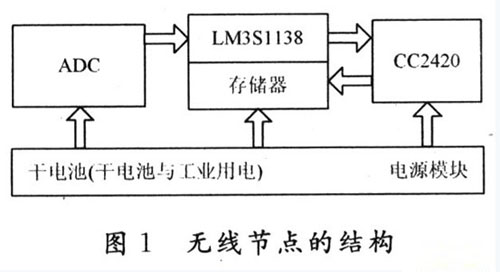
Due to the particularity of the nuclear power plant, it is convenient to take power for certain parts. Therefore, the two-node method is adopted, that is, the signal acquisition node and the convergence node III. The design of the node is shown in Figure 1. It consists of a sensor, a micro processing unit, a communication module, and a power module. The signal acquisition node is powered by a common high-energy dry battery, while the sink node uses a dry battery and 220 V dual power supply design scheme (as shown in Figure 2). The voltage of 220 V is stepped down to 5 V by the low-voltage transformer, and is rectified and input to Vin. After the SPX1117 voltage regulator circuit, it can output 3.3 V regulated voltage at Vout. In this way, the computing power of the aggregation node can be greatly enhanced, and the working time of the network can be maximized. The same battery can also be used for the dry battery of the signal acquisition node. 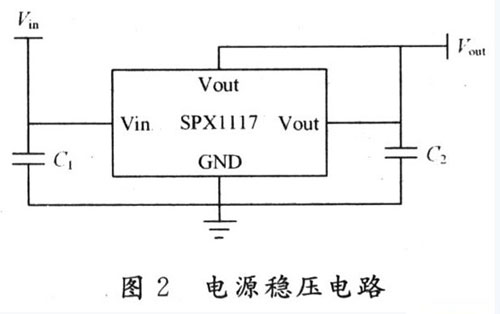
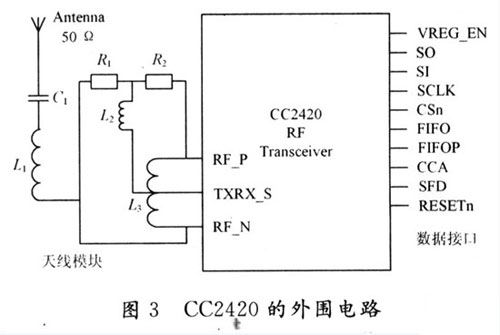

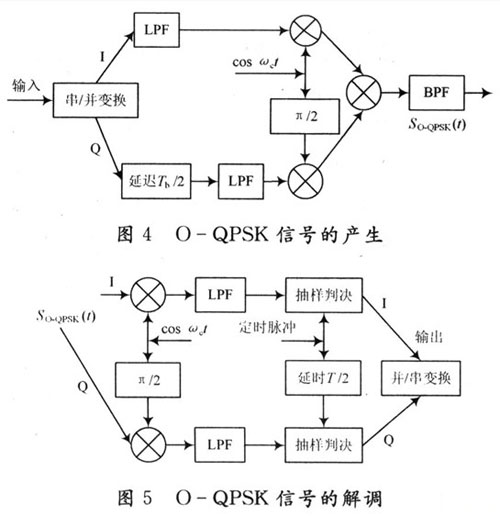

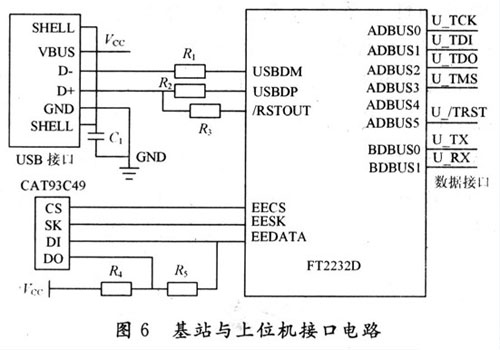
The routing protocol solves the problem of data transmission and is one of the core technologies of WSN. The routing protocol of WSN is different from the traditional Internet network. WSN requires the network to complete the data collection function under the premise of using limited hardware resources and energy. Due to the instability of the wireless channel, the movement and failure of the node and the factory environment, etc. The impact of the WSN topology changes at any time, and the trend of change is random, coupled with a large amount of data redundancy in the network, it is necessary to design a routing protocol suitable for WSN. A special real-time routing algorithm TEEN is adopted for the special requirements of nuclear power equipment. TEEN is a hierarchical structure routing protocol. Under this idea, the network is usually divided into clusters. Each cluster consists of a cluster head and multiple cluster members. The cluster head node is responsible for the management of the members in the cluster, and completes the collection and fusion operations of the information in the cluster, and is also responsible for forwarding the data between the clusters. The TEEN network simplifies the structure (more clusters can be established). As shown in Figure 7, since the number and location of the dual power systems have been determined in advance, the dual power system close to the base station is selected as the cluster head of the route, and the cluster head is determined. After that, the cluster head node informs the whole network that it is the cluster head by broadcasting. The non-cluster head node in the network determines the dependent cluster according to the strength of the received signal and notifies the relevant cluster. The cluster head implements data scheduling by the TDMA method, and also broadcasts two parameters of Hard Threshold (HT) and Soft Threshold (ST) of the data to members in the cluster. The hard threshold is the minimum to start data transmission, and the soft threshold specifies the range of variation of the detected data. During the steady phase of the cluster, the nodes constantly perceive their surroundings through sensors. When the node first detects that the data reaches the hard threshold, it opens the transceiver for data transmission and saves the detected value as a monitored value (SV). When the node performs data transmission again, two conditions are met: the current detected value is greater than the hard threshold; the difference between the current detected value and the SV is equal to or greater than the soft threshold. As long as the node sends data, the variable SV is set to the current detected value. The advantage of the TEEN protocol is that the real-time performance is relatively high. By setting the hard threshold and the soft threshold, TEEN can greatly reduce the number of data transmissions; since the soft threshold can be changed, the monitor can easily balance the monitoring by setting different soft thresholds. Accuracy and system energy efficiency are two indicators; as the cluster head changes, the user can reset the values ​​of the two parameters as needed to control the number of data transmissions. However, TEEN cannot continuously collect data and is not suitable for online data monitoring. For this reason, TEEN broadcasts a counting time to the data collection node, so that even if the required threshold is not reached, as long as the counting time is up, The required data will be collected unconditionally for online monitoring purposes. 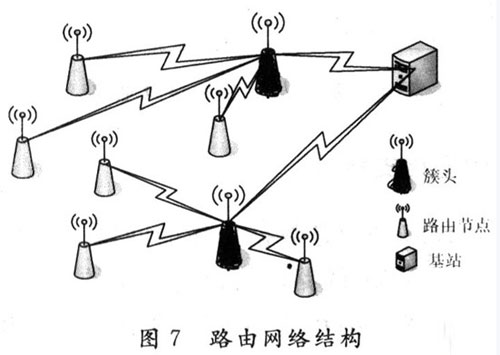
Set the system's hard threshold to 10 ° C, soft threshold to 0, counter count time to 0.1 s, and the system to collect data once for 0.01 s. Due to the large amount of data collected by the temperature, the data collected by the test is marked in the form of a curve by Matlab. As shown in Fig. 8, the collected data is distributed in a dot shape below 10 °C; At the time, the curve is distributed; between 25 and 42 °C, the temperature measured by the on-site electronic thermometer is basically the same, and there is a small deviation between 10 and 25 °C, which may be caused by external system interference. 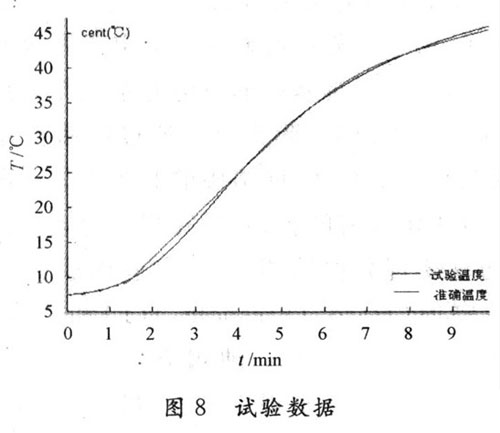
The nuclear power equipment monitoring system adopts WSN, which can effectively collect temperature data under the premise of meeting low power consumption and system reliability. The system is low in cost and convenient in cloth distribution. The test shows that the system can fully meet the needs of the industry. There will be a lot of room for development in electromechanical system monitoring and safety control. In the future research, the focus is on data fusion and mechanical vibration signal acquisition, and feature extraction of the acquired signals to process the effective data.